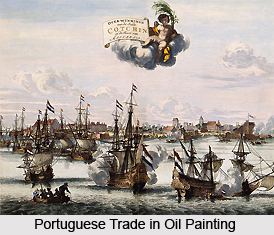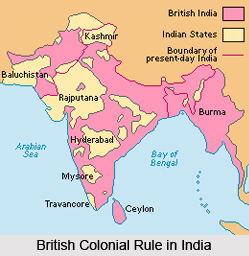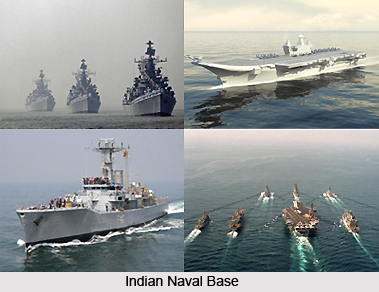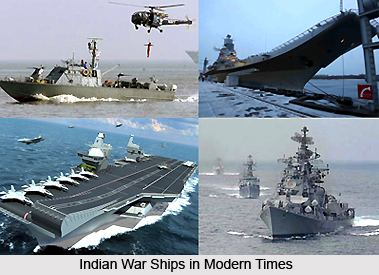 The vast and celebrated journeys of maritime India is itself a vision of legendary personas travelling by sea to reach out to the ancient worlds. Long before even Vasco Da Gama or other historical European explorers had ventured out to sea, Indian seafaring civilisations had discovered novel ways in which people could sale to the Indian Ocean and beyond. To say that Indian history is colossal, in itself an understatement. And maritime India`s journey counts within Indian history as a significant section of study. The exact time line of maritime Indians venturing out to sea can perhaps never be denoted; however, times prior to Christ bear ample proof of Indus Valley Civilization manufacturing indigenous vessels for themselves with materials beyond wood. There also lies sufficient proof that inter-mixing of culture had happened in the international waters through trading of oriental spices or silk. This was the time when influential Empires had tried to subjugate India, trying to make Indian their home country. Western cultural input in India had paved way for the Aryans, the momentous group of individuals who impressed a forever impact on civilisations to come.
The vast and celebrated journeys of maritime India is itself a vision of legendary personas travelling by sea to reach out to the ancient worlds. Long before even Vasco Da Gama or other historical European explorers had ventured out to sea, Indian seafaring civilisations had discovered novel ways in which people could sale to the Indian Ocean and beyond. To say that Indian history is colossal, in itself an understatement. And maritime India`s journey counts within Indian history as a significant section of study. The exact time line of maritime Indians venturing out to sea can perhaps never be denoted; however, times prior to Christ bear ample proof of Indus Valley Civilization manufacturing indigenous vessels for themselves with materials beyond wood. There also lies sufficient proof that inter-mixing of culture had happened in the international waters through trading of oriental spices or silk. This was the time when influential Empires had tried to subjugate India, trying to make Indian their home country. Western cultural input in India had paved way for the Aryans, the momentous group of individuals who impressed a forever impact on civilisations to come.
Journey of maritime India continued on a smooth drive, with the country witnessing various empires changing hands, owing to India`s strategic location by the Indian Ocean. With the advent of the Cholas, Satavahanas and the Mauryas by sea, Indians had already turned an expert in sailing. Hindu rulers of the southern kingdoms like the Andhras together with empires of the north contributed vastly to maritime India`s journey. The period is also known to have brought in Chinese explorers to India, enriched with international outlook. Much had been said and done during these early centuries, with kings like Ashoka or Harshavardhan dominating world history. In fact, it is said that Indian emperors never considered sea sailing a taboo, which was quite a contrary with common people. Hindu ruling in India was brought to an end by the climatic Islamic invasion to the country, once more altering India`s maritime journey. The Slaves, the Khiljis, the Tughlaqs with their powerful man-power and money enamored Indian civilisation, thereby shipping ancient trading to western civilisations. In the meantime, western men were also keen to discover India in its true nature, exploring each hidden nook. Their umpteen voyages bear proof of exchange in business, the Portuguese leading among the Europeans. The advent of Mughal dynasty bore a path-breaking impact on Indian history. By Babur`s times in the early 16th century, India had secretly mastered the art of oceans and sailing, which only awaited the master hands of Mughals. They however were surprising not too keen to journey out to sea, neglecting the sea-sides, concentrating more on land conquers. This impacted upon India heavily, paving way for British invasion by sea in the later half of 17th century. British East India Company came upon India with the intention to endeavour into business with Indian sultans, which never turned out to be true. Their repeated sailings to and from their country only made Indian maritime journeys weak, in the process making the English Company stronger.

The colossal history of British India is not one that needs further elucidation. Ancientness of Indian culture completely was overturned in British times, imposing western cultures. They fought for their supremacy to the top, making India`s maritime journeys their own property. The two World Wars assimilate seafaring ventures, jointly accomplished under the Royal Navy, which had plans to amalgamate Indian Navy to their own wing. When India gained independence, the Indian Navy came out as a shining wing under Indian Armed Forces, which is still going long strides ahead to broaden Indian maritime journey prospects. Their relentless services in every crisis period have been under tremendous appreciation, making the nation sleep in peace.
Maritime Activities in Indian Civilisation, Indian History: Maritime activities in Indian civilisation was widespread and panoptic, to say the least. Beginning early as the 2300 B.C., Indian civilisations had mastered the art of sailing across seas, with Indus Valley Civilization leading the way from Mohenjodaro. From then on, with rulers before Christ to the early centuries in the Anno Domini, Hindu empires had continuously embarked out to oceanic explorations. The Cholas, the Satavahanas, the Mauryas, the Sri Vijayas had also made their presence felt in the coasts of Sumatra or Java. Umpteen activities were carried out in trading perspectives, making the most sought after and phenomenal place by the Indian Ocean.
History of Maritime India, Indian History: History of maritime India is once more redefining Indian history in regards to seafaring generations, starting from the Indus Valley Civilization. Western influence with people like Alexander the Great impressed upon maritime Indian history deeply in its commencement. The very first advanced dock in Lothal during Indus Valley is still existent to make its point known. Sophisticated navigational travelling, hi-tech tools and intelligent men combined to form a unified whole, veering India to become a major nation in world history in international waters. The prolonged centuries from 1st century B.C. to 1st century A.D. were in fact under competent Indian hands sailing out to sea. The Cholas in the ancient times, to Mughals in much later periods gave rise to substantial maritime history under India, making way for advancements under British hands and post-independence betterments.
Territorial History of Indian Ocean, Indian History: Territorial history of Indian Ocean is strictly governed within the lawful borders that India had earmarked for its usage of the unending ocean. Just like any other historical account, territorial history of Indian Ocean was governed by ruling dynasties near and off the sea-coast, like Cholas, Satavahanas, Mauryas and Sri Vijayas. The continuous strife for supremacy in Indian soil led to Indian dynasties also etching out places across Indian Ocean in lands of Singapore, Sumatra and Java. However, in the 13th century the advancement of European powers in India led to the a major bridging of divide across the Ocean, assimilating in the Arabian Sea and Bay of Bengal.
Ancient Ships in India, Indian History: Ancient ships in India were very much built to resists tumult at sea, proving Indian intelligence at its peak. Very first `ships`, which would rather be named as rafts or just a mere structure of a ship made use of wooden planks and tough coconut yarn as a rope. Irons in ships were a strict no-no, owing to biasness and sheer prejudgment of wrecking mid-sea. The coastal areas of India, southern India were numero uno in their attempts to build sturdy ships, consisting of 600 tons of stitched hull edifice. Some of the names in ancient Indian ships comprise, Kattumaram, Kotias, Machwas which were added to the later lists of modern ship building in India.

Indian Maritime Trade, Geography of India: Indian trade has since history been basically concentrated on maritime interests, owing to the country`s strategic location by the Indian Ocean. In fact India has the longest coastline by the Ocean, thus making the nation bring in maximum profit by sea. Historical export of spices and silk paved the route for modern trading exploits with countries like USA and China. Standing at par with international trade charts, Indian maritime trade has raked in huge sums of dollars, crossing its stipulated marks each economic year.
History of Maritime Strategies in India, Indian History: History of maritime strategies in India is proudly traced to times of Rig Veda in the 3rd century B.C. The Vedic period in India was exceedingly modern and sophisticated in every outlook, regarding sea as a major source of income and knowledge giver. With later advent of Mughals, their overlooking of maritime strategies and the consequent arrival of Britishers to Indian coast made seafaring Indians weakened in their approach.
Factors Governing Maritime Strategies in India, Geography of India: The primary factor that governs Indian maritime strategies is that the country is wonderfully placed by the India Ocean. This prime factor leads to other secondary factors out at sea, while bringing home profits and exporting goods via international waters. The infrastructure of ports, economic activities in off-shore oil explorations, energy derivation and the fishing industry supply as the predominant factors governing Indian annual financial system.
Maritime Security of India, Geography of India: Maritime security of India is governed basically with various aspects of the Indian Ocean and territories surrounding its separate borders. Indian administration takes into account several governing factors while making its ships access the international waters. There always lies that surreptitious chance that other littoral countries can sneak into the country`s bordering Oceanic waters. Hence, fishing, shipping and shipbuilding in India, off-shore oil drilling and port structuring account to primary security of maritime Indian strategies.
Maritime Interests of India, Geography of India: Maritime interests of India were deemed to be highly fundamental by Indian administration just after Independence. The country secured its territorial boundaries by the Indian Ocean, thereby making its vast navigational attempts in various spheres unassailable. India`s geo-economic interests within Exclusive Economic Zone (EEZ), oil and natural gas interests, deep sea drilling, fishing, port infrastructure, protecting the SLOCs (Sea Lines of Communication), including non-conventional energy sourcing, take up major maritime interests each year.

Shipbuilding in India, Indian Navy: Shipbuilding in India is an extremely thriving industry, which with each growing year is moving towards even more sophisticated outlook internationally. Ships manufactured in India basically pertain to building warships. In fact, India is one of those few rare nations which have its own integrated industry in shipbuilding. High-end ships have been built with able assistance of officers trained specifically for such purposes. Submarine building is yet another industry that has thrived, owing to private interference. Merchant ship building is also of profitable in its own right, as India is gradually developing its docks by seafaring states.
Indian Navy in Early Twenty-first Century: Indian Navy in early 21st century had taken giant strides towards making themselves known to even hostile situations. With each passing year, Navy had improved its annual budget rankings, sailing hand-in-hand with other major countries in international scenario. Today, ships ply more across oceans, merchant fleet is also on the bright side, ,manufacturing capacity has also increased. Owing to demonstrating its power, Indian Navy in present times of 21st century has made successful the joint naval exercises with US and China.
Indo-US Naval Cooperation, Indian Navy: Indo-US naval co-operation under Indian Navy started from 1992, with a popular name as MALABAR. Beginning with a humble affair of one destroyer and one frigate, the naval cooperation between the two counties has increased manifold since. Barring out some stray inconveniences, such an act that needed much help from the administrative part generally takes off smoothly every year. The Strait of Malacca in this regard assumes prime importance for both India and US, conducting routine search and rescue operations from time to time. Conducted every year in the Indian Ocean, Indo-US naval cooperation began with the signing of the MOU (memorandum of understanding).






































